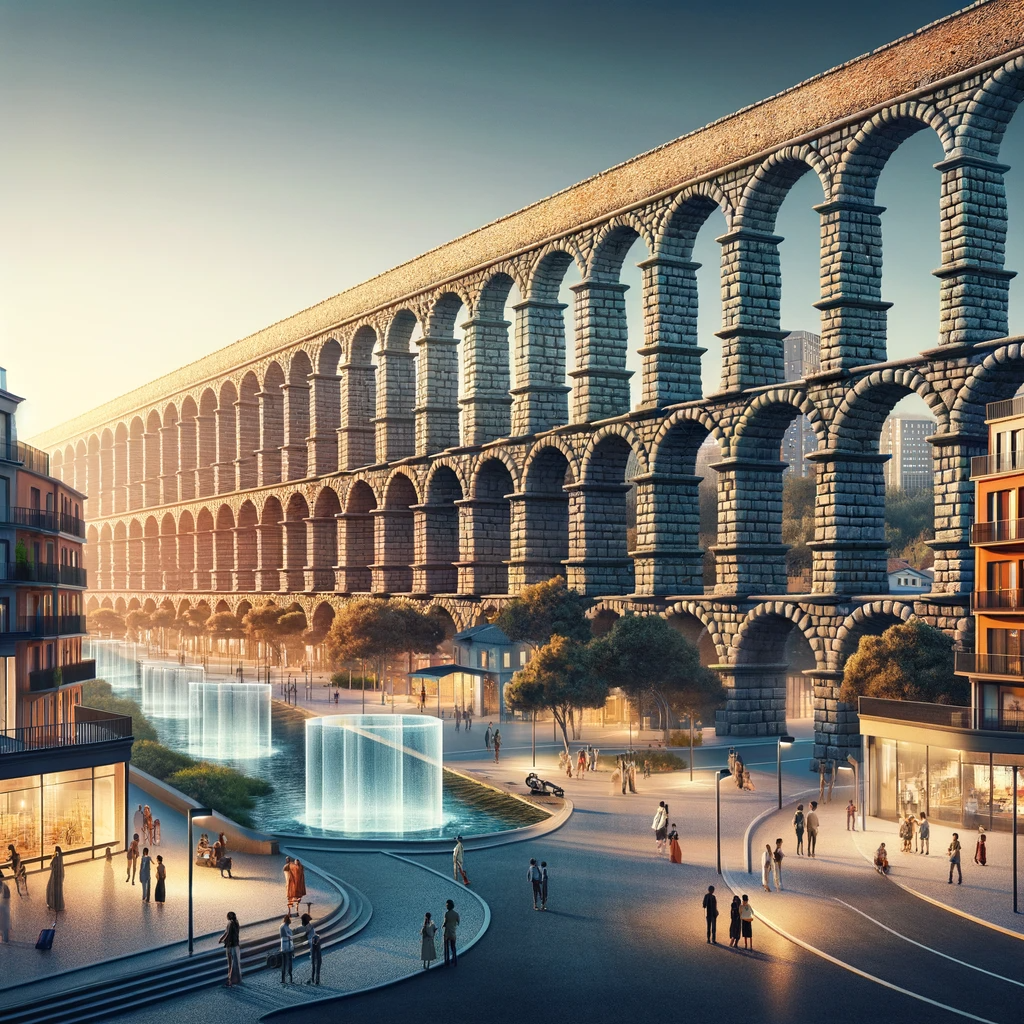In today’s world, where skyscrapers and smart cities define urban landscapes, it’s fascinating to trace the enduring influence of ancient structures like aqueducts. ‘The Legacy of Aqueducts in Modern Context’ takes us on a historical odyssey, exploring how these remarkable feats of ancient engineering continue to shape and inspire our modern infrastructure, environmental strategies, and cultural narratives.

Historical Overview of Aqueducts
Aqueducts, synonymous with Roman engineering prowess, were not just conduits of water; they symbolized the zenith of ancient innovation. This section will provide a brief history of aqueducts, highlighting their design, construction, and role in ancient societies. It sets the foundation for understanding their lasting impact on modern engineering and architecture.
Architectural and Engineering Influence
The architectural brilliance of aqueducts lies not only in their scale but also in their resilience and functionality. This part of the article will explore how modern infrastructure, from water supply systems to bridge designs, draws inspiration from the principles used in aqueduct construction. We’ll look at specific examples where ancient aqueduct techniques have been applied or adapted in modern engineering.
Aqueducts in Urban Planning and Development
Aqueducts were more than engineering marvels; they were central to urban planning in ancient times. This segment will discuss how the concepts of aqueducts influence contemporary urban development, particularly in terms of water management, public spaces, and city layouts. Insights from city planners and historians will be included to enrich this discussion.
Cultural and Educational Significance
The legacy of aqueducts extends into the realms of culture and education. In this section, we’ll delve into how aqueducts have become symbols of cultural heritage, inspiring artworks, literature, and educational programs. Their role in promoting historical awareness and environmental conservation will also be highlighted.
Environmental Perspectives
Aqueducts were early examples of sustainable engineering. This part of the article will focus on how the principles of aqueducts are being revisited in modern environmental sustainability projects, such as rainwater harvesting and eco-friendly water transport systems. The relevance of these ancient systems in addressing contemporary environmental challenges will be emphasized.
Conclusion
The article will conclude by summarizing the multifaceted legacy of aqueducts in our modern context. It will reiterate their timeless significance, not only as historical monuments but also as sources of inspiration and learning in various fields.
